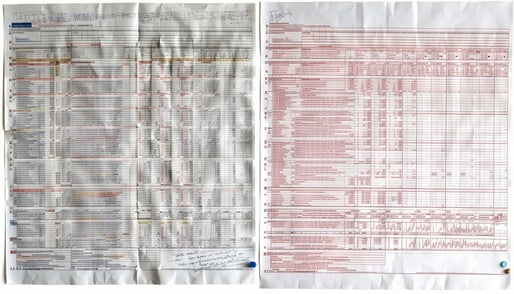Discover how continuous compliance can enhance control visibility and improve security posture.
Why Control Visibility is Important for Compliance
Control visibility is crucial for compliance as it allows organisations to clearly understand their security and risk posture in real-time. By having complete control visibility, organisations can effectively monitor and manage their security controls to ensure continuous compliance.
With control visibility, organisations can identify any gaps or weaknesses in their security controls and take proactive measures to address them. This helps in preventing potential security breaches and non-compliance issues.
Control visibility also enables organisations to be more transparent and accountable in their compliance efforts. It allows them to demonstrate to regulatory bodies and auditors that they have implemented and maintained the necessary security controls to meet compliance requirements.
Overall, control visibility plays a critical role in ensuring compliance and minimising security risks.
The Benefits of Continuous Compliance
Continuous compliance offers several benefits for organisations, especially when it comes to control visibility.
Firstly, continuous compliance provides real-time monitoring of security controls, allowing organisations to detect and respond to any control failures or deviations immediately. This ensures that any compliance issues are promptly addressed and resolved.
Secondly, continuous compliance helps organisations maintain a continuous state of compliance by automating the monitoring and reporting of security controls. This reduces the manual effort required for compliance management and allows organisations to focus on other strategic initiatives.
Additionally, continuous compliance enhances control visibility by providing comprehensive reporting and analytics. Organisations can gain valuable insights into the effectiveness of their security controls, identify trends or patterns, and make data-driven decisions to improve their security posture.
By maximising control visibility through continuous compliance, organisations can effectively mitigate risks, maintain compliance, and enhance their overall security posture.
Implementing a Continuous Controls Monitoring System
To implement a successful continuous control monitoring system, organisations should follow a systematic approach.
Firstly, they need to identify and document their security controls. This involves understanding the relevant compliance requirements, mapping them to specific security controls, and defining the desired control objectives.
Next, organisations should select a suitable continuous controls monitoring platform that provides real-time visibility into their security controls. The platform should offer automated monitoring capabilities, continuous compliance assessment, and reporting functionalities.
Once the platform is selected, organisations should configure and customise it according to their specific control requirements. This may involve defining control thresholds, setting up alerts and notifications, and integrating with other security tools or systems.
After the configuration is complete, organisations should deploy the continuous controls monitoring system across their infrastructure. This may require installing agents, configuring network monitoring devices, or integrating with existing security information and event management (SIEM) systems.
Finally, organisations should regularly review and update their continuous controls monitoring system to ensure its effectiveness. This includes conducting periodic assessments, reviewing control performance metrics, and addressing any issues or gaps identified through monitoring.
By implementing a continuous controls monitoring system, organisations can achieve better control visibility, enhance compliance, and strengthen their security posture.
Key Features of a Successful Control Visibility Program
A successful control visibility program should have certain key features to effectively monitor and manage security controls.
Firstly, it should provide real-time control visibility, allowing organisations to monitor their security controls continuously. This enables them to detect and respond to control failures or deviations promptly.
Secondly, the program should offer automated monitoring capabilities, reducing the manual effort required for compliance management. It should automatically collect data from various security control sources, analyse it, and generate alerts or reports.
Additionally, the program should have comprehensive reporting and analytics capabilities. It should provide detailed insights into the effectiveness of security controls, compliance status, and potential risks or vulnerabilities.
Furthermore, the program should support customisation and scalability. Organisations should be able to configure the program according to their specific control requirements and easily scale it as their infrastructure or compliance needs evolve.
Lastly, the program should integrate with other security tools or systems to provide a holistic view of control visibility. This includes integration with SIEM systems, vulnerability scanners, or configuration management tools.
By incorporating these key features into a control visibility program, organisations can effectively monitor and manage their security controls, maintain compliance, and mitigate security risks.
Measuring the Effectiveness of Continuous Compliance
Measuring the effectiveness of continuous compliance is essential to ensure its success and identify areas for improvement.
One way to measure effectiveness is through compliance metrics. Organisations can track key compliance indicators, such as the percentage of controls in compliance, the number of control failures, or the time taken to resolve control issues. These metrics provide insights into the overall compliance status and help organisations identify any compliance gaps or trends.
Another way to measure effectiveness is through control performance metrics. Organisations can assess the performance of their security controls, such as the detection rate of control failures, the response time to control deviations or the effectiveness of control remediation measures. These metrics help organisations evaluate the efficiency and effectiveness of their control visibility program.
Furthermore, organisations can conduct regular compliance audits or assessments to validate the effectiveness of their continuous compliance efforts. These audits can identify any control deficiencies, non-compliance issues, or areas for improvement.
By regularly measuring the effectiveness of continuous compliance, organisations can identify areas for enhancement, address any compliance gaps, and continuously improve their control visibility and security posture.

May 16, 2024 10:31:28 AM


